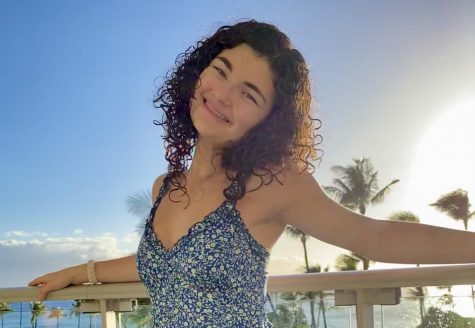Disinfodemic
From endemic to epidemic to pandemic, COVID-19 is the biggest widespread disease since the SARS outbreak in 2003. With tensions high and people looking for comfort in a time of isolation, the media has been a tool many use to calm down. American citizens have access to a widespread array of media to gain more information about COVID-19 but many of the newspaper articles, websites, and social media posts have been found to present incorrect information. Even seemingly trustworthy sources may effectively spread false information by feeding off of the increased and heightened urgency their viewers have during this challenging time. Unreliable and false information is so widespread that some commentators are now referring to the mass of misinformation about COVID-19 as a ‘disinfodemic’.
“Honestly I don’t really like looking at the news, it gives out fake news and sometimes that fake news can scare you,” said Nasim Afhamnejad ’22. “I don’t really know how to differentiate it.”
In response, Facebook has taken action in an effort to prevent the spread of misinformation about the pandemic. Facebook users who have read, watched, or shared false information about COVID-19 will receive a pop-up alert recommending they go to the World Health Organization’s website for accurate references.
 Photo Creds:BBC: Picture of Facebook Pop-Up Warnings About False Information
Photo Creds:BBC: Picture of Facebook Pop-Up Warnings About False Information
According to BBC News, Facebook founder and chief executive Mark Zuckerberg has said that Facebook has now directed more than 2 billion people to authoritative health resources via (their) Covid-19 Information Center and educational pop-ups, with more than 350 million people clicking through to learn more.
In addition, fabricated theories such as drinking bleach to cure the virus or that social distancing is ineffective have been taken down by Facebook fact checkers.
Mayfield students have shown attention to similar methods of working against fake news stories.
“I always check sources and refer to the CDC/government websites. A lot of fake news is dramatized/sensationalized,” commented Lucy Martinez ’22.
Sources such as The Centers for Disease Control and Protection (CDC), The Los Angeles County Department of Public Health (LADPH), and The World Health Organization (WHO) are deemed reliable sources to learn more about COVID-19. As journalists, the Mayfield Crier Staff encourages that before sharing a social media post with a friend or forwarding that new article about COVID-19, double check the source with another trusted source to ensure no more false information is spread.

Gracie Sandman is the Mayfield Crier’s Print and Online Editor-In-Chief. She is an award winning journalist and documentary filmmaker. She is particularly...

